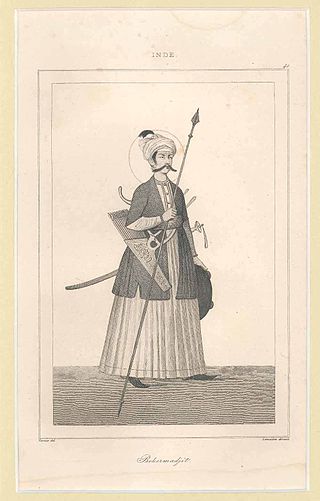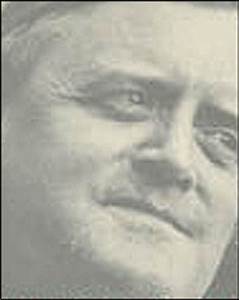Related Research Articles

A fairy tale is a short story that belongs to the folklore genre. Such stories typically feature magic, enchantments, and mythical or fanciful beings. In most cultures, there is no clear line separating myth from folk or fairy tale; all these together form the literature of preliterate societies. Fairy tales may be distinguished from other folk narratives such as legends and explicit moral tales, including beast fables. Prevalent elements include dragons, dwarfs, elves, fairies, giants, gnomes, goblins, griffins, merfolk, monsters, monarchy, pixies, talking animals, trolls, unicorns, witches, wizards, magic, and enchantments.

English folklore consists of the myths and legends of England, including the region's mythical creatures, traditional recipes, urban legends, proverbs, superstitions, dance, balladry, and folktales that have been passed down through generations, reflecting the cultural heritage of the country. This body of folklore includes a diverse array of characters, such as heroic figures like Beowulf or Robin Hood, legendary kings like Arthur, and mythical creatures like the Green Man and Black Shuck. These tales and traditions have been shaped by the historical experiences of the English people, influenced by the various cultures that have settled in England over centuries, including Celtic, Roman, Anglo-Saxon, Norse, and Norman elements.

The Gondi (Gōṇḍī) or Gond people, who refer to themselves as "Kōītōr", are an ethnolinguistic group in India. Their native language, Gondi, belongs to the Dravidian family. They are spread over the states of Madhya Pradesh, Maharashtra, Chhattisgarh, Uttar Pradesh, Telangana, Andhra Pradesh, Bihar, and Odisha. They are listed as a Scheduled Tribe for the purpose of India's system of reservation.
The folklore of India encompasses the folklore of the Republic of India and the Indian subcontinent. India is an ethnically and religiously diverse country. Given this diversity, it is difficult to generalize the vast folklore of India as a unit.

The Tar-Baby is the second of the Uncle Remus stories published in 1881; it is about a doll made of tar and turpentine used by the villainous Br'er Fox to entrap Br'er Rabbit. The more that Br'er Rabbit fights the Tar-Baby, the more entangled he becomes.

Chhattisgarh is a state of India with strong tribal traditions of music and dance. The state of Chhattisgarh is best known for its deep roots in folk music, which originated from its long history of tribal involvement.
The Aarne–Thompson–Uther Index is a catalogue of folktale types used in folklore studies. The ATU index is the product of a series of revisions and expansions by an international group of scholars: Originally published in German by Finnish folklorist Antti Aarne (1910), the index was translated into English, revised, and expanded by American folklorist Stith Thompson, and later further revised and expanded by German folklorist Hans-Jörg Uther (2004). The ATU index is an essential tool for folklorists, used along with the Thompson (1932)Motif-Index of Folk-Literature.

Raigarh is a city in northern Chhattisgarh known as the 'Cultural capital of Chhattisgarh'; Raigarh is famous for its dance form “SUWA” and classical music; Raigarh is also known as Sanskritidhani.

Vikramaditya was a legendary king as mentioned in ancient Indian literature, featuring in traditional stories including those in Vetala Panchavimshati and Singhasan Battisi. Many describe him as ruler with his capital at Ujjain. "Vikramaditya" was also a common title adopted by several monarchs in ancient and medieval India, and the Vikramaditya legends may be embellished accounts of different kings. According to popular tradition, Vikramaditya began the Vikrama Samvat era in 57 BCE after defeating the Shakas, and those who believe that he is based on a historical figure place him around the first century BCE. However, this era is identified as "Vikrama Samvat" after the ninth century CE.

Gondi (Gōṇḍī), natively known as Koitur, is a South-Central Dravidian language, spoken by about three million Gondi people, chiefly in the Indian states of Madhya Pradesh, Maharashtra, Chhattisgarh, Andhra Pradesh, Telangana and by small minorities in neighbouring states. Although it is the language of the Gond people, it is highly endangered, with only one fifth of Gonds speaking the language. Gondi has a rich folk literature, examples of which are wedding songs and narrations. Gondi people are ethnically related to the Telugus. Gondi is the largest minor Dravidian language by number of speakers.

Harry Verrier Holman Elwin was a British-born Indian anthropologist, ethnologist and tribal activist. He first abandoned the clergy, to work with Mahatma Gandhi and the Indian National Congress, then converted to Hinduism in 1935 after staying in a Gandhian ashram, and split with the nationalists over what he felt was an overhasty process of transformation and assimilation for the tribals. Verrier Elwin is best known for his early work with the Baigas and Gonds of Orissa and Madhya Pradesh in central India, and he married a 13 year old member of one of the communities he studied. He later also worked on the tribals of several North East Indian states especially North-East Frontier Agency (NEFA) and settled in Shillong, the hill capital of Meghalaya.

Punjabi folklore are a core part of the Punjabi culture. Other important components of Punjabi folklore are farces, anecdotes, idioms, folktales, and sayings.
Malagasy mythology is rooted in oral history and has been transmitted by storytelling, notably the Andriambahoaka epic, including the Ibonia cycle. At least 6% of Madagascar are adherents of the religion, which is known as Fomba Gasy, and surveys show it is likely at least half practice some aspects of it. Adherence to Fomba Gasy is high amongst the Sakalava people, as they are reluctant to convert to faiths of foreign origin.

The Dhola Maru is the romantic tale of Dhola and Maru in Rajasthan. The Rajasthani version is entirely different from a version found in Chhattisgarh. The folktale can also be found in Punjab.

Bharatthari, also known as "Baba Bharthari" or "Jogi Sant" Bharthari in many parts of India, is the hero of many folk stories in North India. He was the ruler of Ujjain, before renouncing the world and abdicating in the favor of his younger brother Vikramaditya.
This list of the works of William Crooke (1848–1923) represents much of his literary output in pursuit of his interests in ethnology and folklore, for which he was far many years considered to be a leading authority.

Punjabi folk music is the traditional music on the traditional musical instruments of the Punjab region of the Indian subcontinent. There is a great repertoire of music from the time of birth through the different stages of joy and sorrow till death. The folk music invokes the traditions as well as the hardworking nature, bravery and many more things that the people of Punjab get from its gateway-to-India geographical location. Due to the large area with many sub-regions, the folk music has minor lingual differences but invokes the same feelings. The sub-regions, Malwa, Doaba, Majha, have numerous folk songs. Punjabi dance OP Bhangra music which is a genre of Punjabi modern music invented in Britain by the Punjabi diaspora.

Raigarh was a princely state in India during the British Raj. The state was ruled by the Gond dynasty of Gond clan.
The Gondwana Kingdoms were the ruling kingdoms in the Gondwana region of India. The Gondwana region includes the core region of the eastern part of the Vidarbha of Maharashtra, Garha Kingdom, the parts of Madhya Pradesh immediately to the north of it, and parts of western Chhattisgarh. The wider region extends beyond these, also including parts of northern Telangana, western Odisha and southern Uttar Pradesh.
Susan Snow Wadley is an American anthropologist.
References
- ↑ Twente, Theophil H. Folk Tales of Chhattisgarh India . North Tonawanda, NY: The Bodoni Press, 1938.
- ↑ Twente 1938 , p. 9
- ↑ Twente 1938 , p. 10
- ↑ Twente 1938 , p. 11
- ↑ Twente 1938 , p. 12
- ↑ Twente 1938 , pp. 13–14
- ↑ Twente 1938 , pp. 15–16
- ↑ Twente 1938 , pp. 17–19
- ↑ Twente 1938 , pp. 20–23
- ↑ Twente 1938 , p. 24
- ↑ Twente 1938 , pp. 25–27
- ↑ Twente 1938 , p. 28
- ↑ Twente 1938 , pp. 29–30
- ↑ Twente 1938 , pp. 31–35
- ↑ Twente 1938 , p. 36
- ↑ Twente 1938 , pp. 37–39
- ↑ Twente 1938 , p. 40
- ↑ Twente 1938 , pp. 41–42
- ↑ Twente 1938 , pp. 43–44
- ↑ Twente 1938 , pp. 45–46
- ↑ Twente 1938 , pp. 47–48
- ↑ Twente 1938 , pp. 49–51
- ↑ Twente 1938 , p. 52
- ↑ Twente 1938 , pp. 53–54
- ↑ Twente 1938 , p. 55
- ↑ Twente 1938 , pp. 56–60
- ↑ Twente 1938 , p. 61
- ↑ "Epic traditions in the contemporary world: the poetics of community By Margaret H. Beissinger, Susanne Lindgren Wofford"
- ↑ Wadley, Susan Snow. Raja Nal and the Goddess: the north Indian epic Dhola in performance . Indiana University Press, 2004. p. 212. ISBN 9780253217240.
- ↑ "Folk tales of Bihar by Pranab Chandra Roy Choudhury (Saranga and Sada Brij -Chapter 3)"
- ↑ "Chhattisgarh General Knowledge (Page 43)"
- ↑ "Screen World Publication's 75 glorious years of Indian cinema: Complete filmography of all films (silent & Hindi) produced between 1913-1988 (Page 78)"
- ↑ "Chanda Loric play snap"
- Bibliography
- Twente, Theophil H. (1938). Folk Tales of Chhattisgarh India. North Tonawanda, NY: The Bodoni Press.
- Elwin, Verrier (1953). "Ballads and Tales". Folk Songs Of Chhattisgarh. Oxford University Press. pp. 247–403.